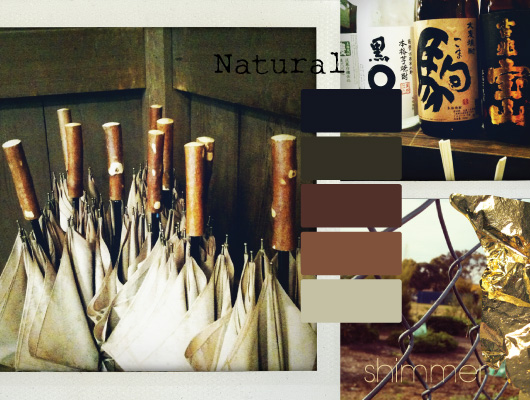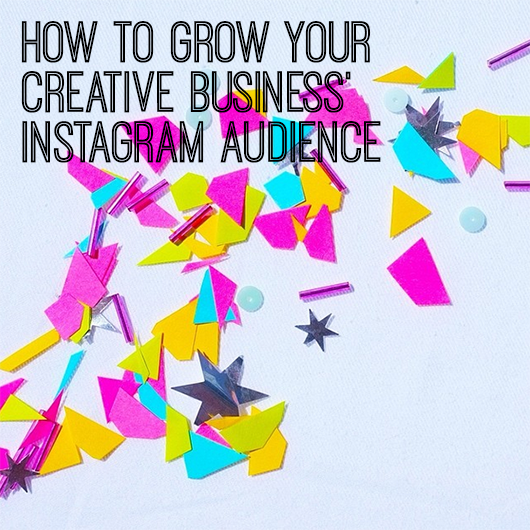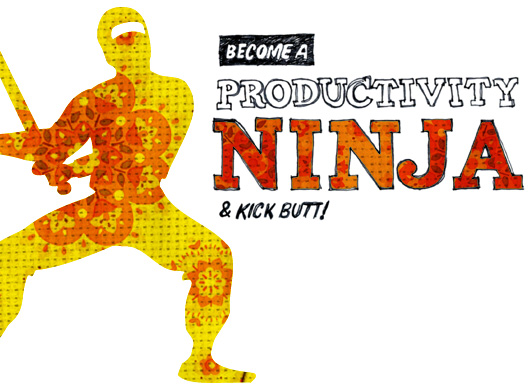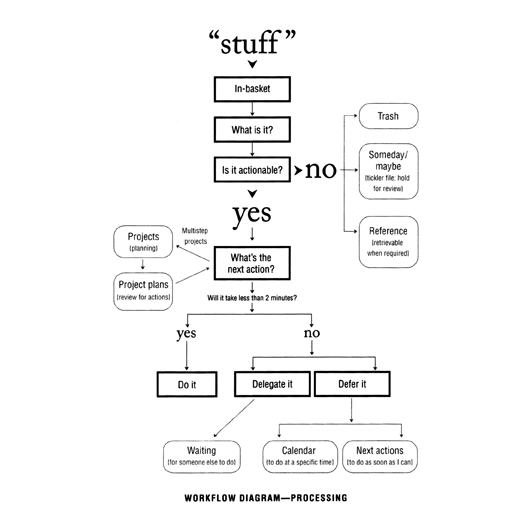5 Tips for Keeping a Positive Mindset When Things Aren’t Going to Plan
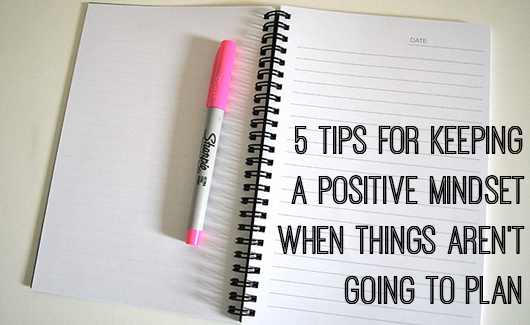 Sometimes we have periods where our businesses are going great-guns. It's hard work but things are moving quickly and in a forward direction. Nothing but awesome - it's a great place to be. But there are also times where we might start to wonder why things aren’t going to plan, and why it feels more like we’re treading water (even if it looks awesome from the outside looking in).
Sometimes we have periods where our businesses are going great-guns. It's hard work but things are moving quickly and in a forward direction. Nothing but awesome - it's a great place to be. But there are also times where we might start to wonder why things aren’t going to plan, and why it feels more like we’re treading water (even if it looks awesome from the outside looking in).
Here are some tips to work with that.
- Take a break and get away from work. This could be an hour or two in a coffee shop or a weekend away, or even a weekend where you just do anything but work. Clear your head and give it a chance to see the forest for the trees. It can feel counter productive to step away when tasks are piling up and you feel like you should be doing more to fix the situation, but you have to take care of you to take care of your creative business.
- Confide in someone you trust. Even if they can’t give advice, they can help share that load weighing on your mind. They might have some creative solutions, or they might just be someone who’s got your back. We all need them, in good times, but especially when times feel bad. Having someone to remind you of something funny always helps.
- Come up with a plan. Yes, things aren’t feeling great, but now’s your opportunity to turn the situation around. Identify the things that aren’t working and write them each on their own pieces of paper. Turn your favourite music on, dance, and start to think about how you can use those things (focusing on one at a time) as jumping-off points for something much better. Sometimes it’s in the most frustrating problems that we find the best solutions.
- Dream big and then dream small. Things aren’t going to plan? You realised that this just isn’t working as it is? Now is a great time to start thinking about what does work for you. Ask yourself: What’s the 'big picture?' Got it? Now dream small and turn it into actionable goals. Remember that nothing is a straight sprint to “Hell yeah!”, it’s more like an obstacle course.
- Do something that fills you with energy. When things aren’t going well, it can feel like there’s no time to do the kind of work that fills you with energy and makes you feel great. Try to find 15 minutes to an hour a day to do the task that reminds you what that great feeling feels like. Even if you have to ride the less than great times out, this will give you something to hold onto during those times when you need it most.
All of these things have helped me when things in my creative business haven’t been going as planned. When I came out the other side, I had all these things in my armoury, plus the knowledge that the tough times don’t last forever. Even if things are going great right now, it can be good to make a mental plan of who to reach out too and what it is that always fills you with energy. Here’s to more good times than bad!
Dannielle is a blogger, serial organiser and passionate traveller. She has a secret love of 90s teen movies and can often be found hanging out on Pinterest. She is on a mission to help people bring happiness (and fun) back into their homes with a dash of organisation and a sprinkle of their own awesome style over at her blog Style for a Happy Home.
Create a mood board to clarify your brand
Despite not always wanting to admit it, as creatives who sell our work or creative services, we 'are' our brands. And in the online space, the visual impact of your brand matters more now than ever before. Having a strong cohesive look to everything from your website and social media accounts, to your email marketing and printed promotional pieces, has become increasingly important.
For this reason, it's worth regularly standing back to have a look at the elements of your brand and how they are represented visually, and if that representation accurately reflects who you are and what you do.
Ask yourself: Do they all look like they came from one place? Or are they completely varied and share none of the same visual clues? Do they tell a story or show you something you want to buy or be a part of?
If your communications are leaving you feeling less than stellar about your brand, then don't become disheartened. Like any marketing exercise, it simply might be time for you to start reigning in your ideas, and focus. One way this can be achieved is ti create a mood board for your brand.
 A mood board will create a visual look for your brand so that each time you need to take a photo, use a font, or create a marketing piece you can draw inspiration from the same source material. This way, instead of having a disjointed message, you will be providing a strong clear visual that backs up the presence of your brand.
A mood board will create a visual look for your brand so that each time you need to take a photo, use a font, or create a marketing piece you can draw inspiration from the same source material. This way, instead of having a disjointed message, you will be providing a strong clear visual that backs up the presence of your brand.
Ideally, your mood board should:
- be a collection of images that give you inspiration.
- have images that show the ideals of your brand.
- showcase your aesthetic.
- depict colours, fonts, and styles of imagery that work together and that provide a practical resource you can refer to when creating communications.
But, most importantly, every time you look at your mood board it should make you feel inspired, it should remind you of your goals and all the things you want to achieve in your creative business.
In terms of actually creating a mood board, there are many options. Your mood board can be virtual, using a platform like Pinterest; you could create one using Illustrator or Photoshop; or you could make yourself a coffee, grab a stack of magazines and get to cutting and assemble one on a cork board for above your desk (or if you're really pressed for space, just take over the refrigerator door!).
Mood boards are fun to make and a constant source of inspiration. And remember, they can change. As your brands grows you can add or subtract your source imagery. It won’t stop you from being spontaneous and taking a perfect Instagram image on the spur of the moment, but it might just help to bring your brand and business intentions into focus and create a better visual language.
{Image credits: Screenshot from our Pinterest page; other images by Susan.}
Susan Goodwin is the designer, sewer and creator of Rocket Fuel, ensuring you are decked out in style while cycling. Read her blog or follow her on Twitter @rocketfuelstyle.
My Advice: Staying on top of admin
By Lizzie Stafford There aren’t many small creative business owners who would openly admit to loving their admin work. Tasks like bookkeeping, emails, invoices and social media build up and eventually seem to take over, so you feel like you have little time left for the actual creating. We asked three organised business owners how they stay on top of the books without going insane. In the wise words of potter Ilona Topolcsanyi: “Admin is like a leg wax: if you move quickly, the pain is minimal and the results are pretty damn sexy.”
Check your emails twice daily. No more, no less.
Bek Smith, photographer, Bek Smith Photography & Journal
"Keeping on top of admin is so important when running a business and it's sometimes easy to let the most important tasks slip past you if you don't have a productive system in place. As a photographer running my own business, the best piece of advice I have been given is to check your emails twice daily. No more, no less. This way you can tackle your inbox in two chunks and focus your full attention on each gorgeous client."
Create a routine. Schedule manageable, bite-sized tasks into your weekly calendar.
Nat Carroll, creative director, designer & illustrator, the Seamstress
"Instead of leaving things like marketing, taxes and blog writing to the last minute, which leads to unnecessary stress and tight deadlines, try creating a weekly routine that incorporates these tasks into more manageable, bite-sized items that you can follow through on every week.
Try to stick with it, no matter how busy you might be. Block it out in your calendar. I find Monday mornings are a good, quiet time in the week to plan my goals, write posts for my blog or work on my next self-promotional piece. I also like to finish up on Friday afternoons by dealing with my finances; I'm creatively exhausted by then and need a different kind of task to carry me through until the start of the weekend.
I've found that approaching my business in this way creates more structure to my week, which helps when you only have yourself to answer to. I've also found that I am closer to my goals because I've worked at them every week, in little baby steps, instead of feeling overwhelmed by my 'to-do' list and struggling to find the time to make those things happen."
Your time is important. Regularly measure and assess the value of it.
Ilona Topolcsanyi, potter, Cone 11 Ceramics + Design Studio
"In the first few years of our business we needed to do everything ourselves because we couldn’t afford to pay someone to do it for us. As the business grew, we assessed the value of our time. We asked ourselves: “Would we be better off paying someone to do that so we can concentrate on what we do best?”
What are (my) roles and responsibilities? Can I afford to hand this task over to someone else? If not, then am I equipped with the skills and knowledge to complete this task within a reasonable time frame? Will it save me time and money to be trained?
A few simple computer programs allow a lot of the boring tasks to be automated, reducing the amount of time I need to spend tied to my desk.
I use Campaign Monitor (to manage the studio mailing list and e-newsletter). We have an ipad in the studio with a link to the subscriber page (on our website), which allows visitors to join the mailing list. Gone are the days of transcribing the long list of illegible email addresses.
For the bookkeeping we use QuickBooks and take advantage of features such as automated recurring expenses, importing electronic bank statements and issuing quotes that I can easily turn into invoices. While we can’t afford a regular bookkeeper, we also can’t afford countless wasted hours trying to figure it out. So we invested in some basic training.
For the rest of the tasks that I can’t teach my computer to do for me I allocate two mornings a month with a lovely cup of coffee, a raspberry danish from Dench Bakery and re-runs of Sex in the City."
Lizzie Stafford is a freelance writer and editor and owns and runs Künstler, an independent magazine and bookstore based in Winn Lane, Brisbane. She is the Brisbane events coordinator for CWC.
Statigram makes your Instagram work for you
We all love Instagram, those pocket-sized sneaky peaks into other peoples lives, giving us the opportunity to travel the world, eat all the good things, and see abundant creativity.
It is also a great way to share your own creativity, and if you want to grow an audience for your creative business, then Instagram can be a useful tool to achieve that.
First, a few things to consider:
- Is your account a business account? Are you using it to drive more sales/awareness/and audience to what you do?
- What parts of your life overlap with your business, that add character and richness to your creativity and bring your story to life?
- Is your account name the same as your Twitter/Facebook/blog/Pinterest name?
- What other Instagram accounts do you really enjoy, and why? Do they have beautiful composition, amazing styling, gorgeous photos?
Being strategic about what you post may sound a little less "insta" than you are used to with an Instagram account. However, if you want to use it as a tool to grow your business, then a crazy mash up of last night's leftovers, photos taken in the dark and endless photos of your family or your pets may not necessarily drive sales to your door.
Having a goal and finding the steps to reach it starts with analysis. Enter Statigram. Here, you can find statistics on your Instagram profile, such as who has started following you and who has jumped ship, your 'like' rates, which posts get the most interaction, and it even gives you a handy little graph which shows when the people in your Instagram community are most likely to be online.
Now that you have all this data you can start to use Instagram more effectively.
- Post at the times your community is around for maximum effect.
- Post more of the images your audience likes to see.
- If the images of your work are not getting the most love, then consider different angles of photography, styling in an unusual way or using videos to show how you do things.
- Hashtags may look ugly but good ones can bring a new audience to you. Try searching for your tag and using it occasionally to bring in a new crowd.
You will soon find Statigram as addictive as Instagram. It will place all the information to grow your audience at your fingertips.
(P.S. This post was NOT sponsored by Statigram or Instagram, we just like their websites.)
Susan Goodwin is the designer, sewer and creator of Rocket Fuel, ensuring you are decked out in style while cycling. Read her blog or follow her on Twitter @rocketfuelstyle.
Photo credit: images from Measure Twice Cut Once
How to Take a Break from Social Media (Without Your Business Suffering!)
 Do you ever feel stressed about taking a break from your social media and losing all your traction with your followers/clients/customers? It can be hard to switch it off, especially when it’s such a great marketing and customer service tool for your creative business. But every once in a while you will need to step away.
Do you ever feel stressed about taking a break from your social media and losing all your traction with your followers/clients/customers? It can be hard to switch it off, especially when it’s such a great marketing and customer service tool for your creative business. But every once in a while you will need to step away.
Here are some great ways to do it without losing your following:
- Let your readers/clients/customers know before you go, and if possible, how long you’ll be away. Keeping them in the loop is better than just disappearing without a word.
- Ask them to sign up for your blog’s RSS feed and schedule content for the time you are away. Consider organising guest posts where it’s appropriate or re-publish a series of your most read posts.
- Have someone take over your social media accounts for that time. If you’re taking significant time off, like maternity leave, and have a business that mostly works without you there (passive income or a shop with ready made goods), consider taking someone on for that time to post to your social media accounts and pack orders.
- Use a service like Buffer or Hootsuite to schedule your Twitter posts in advance, so you don’t lose your reach. Facebook has recently improved their scheduling service too. Let your readers know that you're doing this and that you might not be there to answer questions a couple of times before you take the break.
- Decide if Instagram will be included in your social media break - it might seem weird to take a break but still use one social network, but if you’re taking a holiday to a great destination, you can keep your followers in the loop with a holiday happy-snap here and there.
- If you’re still working but taking a 'digital sabbatical', let your clients know that you’ll still be available by email or your regular channels. But if you’re closing up shop as well as taking a social media break, consider preparing some great “we’re back” social media content that's ready to go when you are back and working again.
Taking a break from social media, or even from your business, doesn’t have to mean that you’ll be back at the beginning once you log back in. Most people understand that everyone needs a break to recharge their batteries. Having a clear strategy for your social media while you're away - frequency, content - can help you truly relax while you're on that break.
Dannielle is a blogger, serial organiser and passionate traveller. She has a secret love of 90s teen movies and can often be found hanging out on Pinterest. She is on a mission to help people bring happiness (and fun) back into their homes with a dash of organisation and a sprinkle of their own awesome style over at her blog Style for a Happy Home.
Image from © Lime Lane Photography
My Advice: Starting a retail shop
By Lizzie Stafford Venturing into a new retail business is daunting and most small business owners will admit the first few years are a steep learning curve. It’s tough. But having your own shop space can also be hugely rewarding. I asked five successful store owners for their best piece of advice for starting a retail business.
Don’t get caught up in the details.
Alana Langan, Hunt & Bow, online boutique
"Prior to launching Hunt & Bow I found myself spending hours upon hours getting everything *perfect* behind the scenes, when the most important thing for me to do was just get out there and get going. So much can be tweaked along the way and being an online retailer, it's better to be up and running online and interacting with customers than not. That said, there is definitely a place for getting key things right from the beginning (like your business name and logo - the big things!)"
Everything in business can be learnt.
Tiana Vasiljev, Beautiful Pages, Sydney
"Starting up a business can be daunting but it's not rocket science. Most of business is common sense and everything can be learnt with a bit of practise. Experience is the best teacher when it comes to running a business. The longer you do it, the easier it will become.
Hire a business coach. Find good mentors. Surround yourself with successful people. Finding someone who you can talk to regularly and who can offer advice is a huge help. Having a coach will assist you in identifying and reaching your goals. They can provide focus, motivate you and help clarify your goals (in both business and in life). It's also important to find mentors and learn from what they have to offer. A large amount of how successful you are in life comes down to who you surround yourself with.
Never start a business for the money. You need to truly love what you are doing, stand by your values and believe in what you do. It is important to do something meaningful, something that you truly love doing and care about. It will not only feed your soul, but help grow your business and keep you focused during hard times.
Once you get into it, it's important to never quit. Every great leader that I have ever looked up to persevered to make it work and never quit. Many times your business will get tough, but it is important to preserve and stick with it. Change your strategy or approach if need be, but never give up."
There’s no point trying to be all things to all people.
Julia Pound, Dagmar Rousset, Melbourne
"At first I used to worry that some people didn’t seem to “get” Dagmar. Occasionally they would walk in and laugh at the stock, or tell me they were too old for it (despite the fact that some of my most loyal customers are over 60). I told this to my accountant and she suggested I stock a broader range that would appeal to a greater cross section of the population. I thought about this for a while and then I had an epiphany: does Radiohead worry about how to get in on Justin Bieber’s demographic? Does Opera Australia advertise at AFL games? Why would you worry about not everyone liking you? Just do it for you and all the people who “get” you. There is such a sense of relief in thinking this way – it’s truly life changing, or at least it was for me. Now I just worry about what my customers like. No one else matters."
Invite other people to perform some of the everyday tasks.
Michelle Gillies, Nook, Brisbane
"A lesson that I'm in the process of learning is that as soon as it's possible, I think that it's beneficial to invite other people to perform some of the everyday tasks, to enable you to focus on other creative or developmental aspects of the business. Many of the day-to-day tasks can be time consuming and tiring and leave you with less time to be creative and consider new ways to grow and evolve the business. It is essential to allow time to research new suppliers and products, consider store related events and come up with nice new ways to display stock. This can also ensure that you remain interested, enthusiastic and inspired, which is just as important for you as it is for the business."
Stay true to your vision.
Lyndal Gubbels, The Flower Dispensary, Geelong
"Don't expect others to have the same vision as you; they don't know what's going on inside that creative head of yours. I'm not the best person to explain all the visions I'm having inside my head, and trying to relay this to your staff is not an easy task.
Having staff that have similar visions has been my hardest hurdle since having The Flower Dispensary. Staff need to have a similar style or be willing to adapt their style to suit your business.
I opened The Flower Dispensary to be a feel good place to all, a place to escape and evoke the senses with beautiful smelling blooms and colour and to be greeted with happy staff that are working because they have a passion for their trade.
I thoroughly enjoy working in a creative space with the staff that we employ to continue to grow our business. I learn everyday from them."
----
Lizzie Stafford is a writer and soon-to-be retailer in Brisbane. Her magazine and book store Künstler will open in March 2014. She is also organising Brisbane’s first CWC event happening in April, with more details announced soon!
Organise Me: Become a Productivity Ninja
Are you crazy busy and feel like you need more time? Oh my goodness that is how I feel at least half of every week. Upon complaining about my constant faux busyness to my flatmate he introduced me to a new system for becoming productive – GTD the acronym for Getting Things Done, a phrase that will revolutionise your productivity and your life (both work and personal). Written by David Allen, GTD has become a best-seller. After developing a simple model for getting results Allen now coaches, consults, speaks, and writes about the topic of stress-free productivity.
The basic idea behind GTD is to be "meaningfully engaged" and present in the moment with the one task at hand. That task or action could be a project, a client meeting or simply watching a movie.
In response to being asked how you gain focus and control over your thoughts, David says, "Keep anything potentially meaningful out of your head, sooner rather than later decide what it means and what you’re going to do about it, and park those results in some trusted place that some part of you knows you’ll look at the right time and the right place, and trust your intuitive judgments about what to do. That’s all it is.”
I urge you to make the time to watch David Allens recent TedX Talk on “The art of stress-free productivity is a martial art.”, it will get you thinking and clarifying your thoughts.
For us creative types, often our goal is to be more creative. It only takes a moment to have a creative thought but as David explains if you're already in a creative mess you have no freedom to use your creative energy. Apparently an average person has between 30 to 100 thoughts and un-actioned projects in mind at any one time. Now imagine how relaxed and how clear your thoughts would be if you weren't thinking about these projects? You would be elevated to the position of 'Captain and Commander'.
Image source: Getting Things Done by David Allen.
To get to be your own Captain and Commander, Allen steps you through the action model of GTD in his book. Here are a couple of key steps to get you interested:
Write everything down. Get your thoughts and To Do List out of your head and onto paper.
Understand the purpose. Decide the outcome that you are committed to finish and by doing so create a project.
Process it once. Set up the right categories for your lists.
- A "Projects" list
- Project support material
- Calendared actions and information
- "Next Actions" lists
- A "Waiting For" list
- Reference material
- A "Someday/Maybe" list
Map your next action. Think of your To Do List as actual actions. In order to finalise the project what is the next actionable step?
Review. Trust the model and review your "maps" or categorised lists once a week.
For such a basic model GTD can feel very awkward at first. You are required to think differently and set up a system for gathering your thoughts. However, after starting the process myself I already feel lighter and I am looking forward to taking on next year with a system in place. For more on the author of GTD visit davidco.com
Andrea McArthur has a passion for all things visual and a soft spot for organisation. Type is her true love and goes weak at the knees over beautiful design. Andrea works as a freelance graphic designer in Brisbane by day and lectures in graphic design by night. You will find her sharing design related goodness via @andyjane_mc www.andyjane.com


